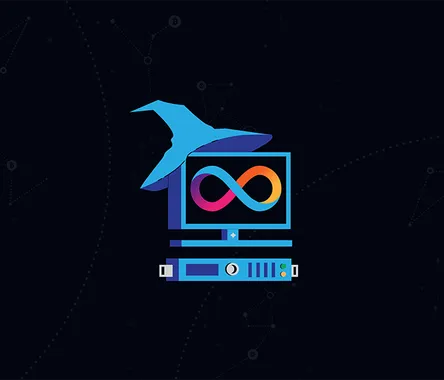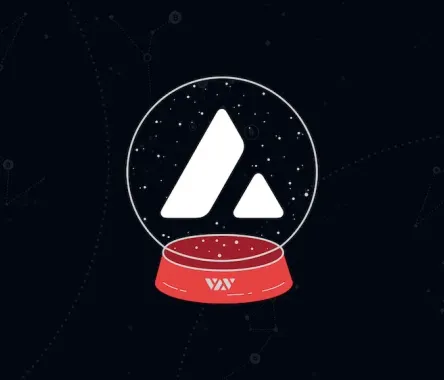Detailed beginner-friendly Aave review
jan 20
Aave: Decentralized Lending Simplified
Aave is a decentralized non-custodial liquidity protocol where users can participate as depositors or borrowers. Depositors provide liquidity to earn a passive income, while borrowers can borrow crypto assets. Sounds like a bank for crypto? Not really. Aave has a few favorable distinctions.
Banks act as intermediaries between borrowers and depositors, while on Aave users rely on liquidity pools from which they can directly use each other's assets. Unlike banks, which charge commissions for their services, with Aave you don't have to pay any extra fees. As opposed to the complicated and slow infrastructure of a bank, Aave has an automated structure that is available 24/7. Here you won't have to go through KYC procedures and share your personal data, and most importantly, unlike banks where you may be denied access to your funds at any time, Aave is non-custodial, which means that it doesn't manage your funds without your consent.
To automate the protocol, Aave uses smart contracts, computer programs stored on a blockchain that work when predetermined agreements are met. Both deposits and borrowings are tokenized on Aave, which means they exist in the form of tokens on a dedicated smart contract. Thus, Aave is a suite of smart contracts working in a bind. Let's take an example.
Alice puts ETH into the Aave pool. This pool is managed by a smart contract called Lending Pool. Then another smart contract comes into play that creates tokens called aTokens for each deposit. These tokens can be compared to a deposit certificate.
Thus, having deposited ETH, Alice will receive aETH. aTokens are yield-bearing - they will accumulate interest on Alice's ether. What does Alice's interest depend on? The more her ether is used by other people for borrowing, the more profit Alice will get. Alice's aTokens are stored in her wallet and are not locked up anywhere so she can freely use them as liquidity.
Bob wants to borrow ETH. On Aave, he can borrow the ETH Alice supplied directly from her, without any intermediaries. However, to do so, he needs to put down collateral. Collateral must be in one of the coins supported by Aave and must exceed the value of the loan. Bob deposits DAI as collateral. He is credited aDAI for it. His aDAI now also start earning interest.
However, unlike Alice, Bob cannot use aDAI as liquidity as long as his DAI are used as collateral. When Bob wishes to take his DAI back, he has to return the same amount of ETH he borrowed along with a Borrow Interest Rate on top of it.
The Borrow Interest Rate paid on top goes to Alice in the form of aETH tokens, minus the share kept by the protocol as an ecosystem reserve. Bob receives aDAI credited to his collateral, he exchanges it for DAI and withdraws it. When Alice wants to take her ETH back, she exchanges her aETH to ETH and withdraws it to her wallet.
That was a basic outline of how Aave works. Now, let's delve a little deeper and take a closer look at the situations borrowers can find themselves in and the factors they need to pay attention to.
How to safely use Aave
With an ETH value of $1,000, Bob has put down 2,000 DAI as collateral. For his 2,000 DAI collateral, Bob has decided to borrow 1 ETH. How much more can Bob borrow with it? The maximum amount of funds available to Bob is determined by The Loan to Value ratio or LTV.
LTV is expressed as a percentage that shows how much one can borrow with their collateral. LTV varies for each token and depends on the risk parameters of the token. For example, with an LTV of 77% for DAI, Bob can borrow no more than 77% of the 2,000 DAI he deposited, which is 1,540 DAI or approximately 1.5 ETH.
But what if ETH goes up in value? Imagine that the price of ETH grows over $1,500. Bob has reached his maximum LTV and can no longer borrow anything with his collateral. ETH has risen even further and is approaching $1,800. Bob's position may soon reach the Liquidation Threshold.
Each asset has a Liquidation Threshold - an index expressed as a percentage at which a position is defined as undercollateralized. On Aave, the Liquidation Threshold for DAI is set at 90%. This means that if ETH becomes more valuable and exceeds that threshold, Bob’s collateral will no longer cover his loan and his position becomes available for liquidation.
To keep Bob's position safe, he needs to keep an eye on a parameter called Health Factor. The Health Factor is calculated from the LTV and Liquidation Threshold. If the Health Factor reaches 1, the position will be liquidated.
So, with ETH close to $1,800, Bob's Health Factor falls down to one, as his loan risks hitting 90% of his collateral and thus reaching the liquidation threshold. And then Bob has two choices - he can pay back some of the borrowed ETH so that his Health Factor goes up. Or he can put more DAI as collateral, also increasing his Health Factor.
But let's imagine that Bob wasn't prudent, and didn't take any measures to strengthen his position, the Health Factor has reached one, and we meet liquidators. Liquidators are network members that use dedicated bots to keep track of borrowers' accounts and compete for the opportunity to liquidate their collateral. Any user can act as a liquidator, but it usually requires more knowledge than simply using Aave as a supplier or borrower.
A liquidator sees that Bob's position is now undercollateralized, and is in a hurry to liquidate his position. The liquidator has to pay back a maximum of 50 percent of Bob's debt amount and request the same amount of Bob’s DAI collateral plus a liquidator bonus in return. The liquidator bonus varies depending on the cryptocurrency used in the loan. The liquidator also has a choice to get their bonus in Bob’s aDAI or underlying DAI tokens. With a liquidation bonus of 5%, the liquidator gets 900 + 45 aDAI or DAI, depending on their choice.
Aave interest rates
Now, let’s take a closer look at the Borrow Interest Rate and see how it is calculated. The borrow interest rate determines the interest paid by the borrower for the use of borrowed funds and is derived from the Utilization Rate.
The utilization rate controls what part of the reserve’s total capital is borrowed at a time. The rate is a balancing regulator for Aave's liquidity. There are two types of Borrow Interest Rates available to users: stable and variable.
The variable interest rate depends on the use of the protocol's liquidity pools. The logic behind the variable rate changes as follows: when there is capital available, interest rates are set low to incentivize borrowing and vice versa, when there is a shortage of capital, interest rates can get higher to incentivize debt repayment and additional fund supply.
By contrast, the stable borrow interest rate remains unchanged from the moment the loan is issued. It’s worth mentioning, however, that, though predictable, stable interest rates are often higher than the variable. The stable rates may change in case certain rebalancing conditions are met.
Since the launch of the first version of the Aave protocol in 2020, there have been second and third versions of it, in both of which Aave has sought to further automate the protocol and minimize the human factor. The first version of Aave had lend & borrow functionality and tokenized depositors’ positions.
Further Aave security improvements
In the second version, the protocol tokenized all user positions introducing Debt tokens. Similarly to aTokens, debt tokens are a certificate of a borrower's debt and accumulate Stable or Variable interest that the borrower needs to pay. In V2, Aave also introduced a new product called Credit Delegation which gives the depositors an option of delegating borrowing power to other users.
The second version of Aave has also integrated Flash Loans into the protocol. Flash Loans are a kind of loan that one can take without putting up any collateral, as long as the assets are returned to the protocol within one block transaction.
One of the central features of V3 is Portal - a feature designed to allow supplied assets to flow between Aave markets on different blockchains. By the time the third version of the protocol was released, Aave had already begun to expand its horizons beyond Ethereum to other networks like Avalanche, Polygon, Optimism, and Arbitrum.
Another V3 innovation - eMode or High Efficiency Mode - allows borrowing up to 97% of collateral value provided that the price of the loaned asset and the price of collateral are correlated, like two stablecoins pegged to the US dollar, for example.
Other innovations in Aave V3 are related to risk mitigation. They are: Isolation Mode – a mode for new assets assessed as high-risk. Supply and Borrow caps - a feature that limits the amount of assets to deposit and borrow to help reduce the risk of potential insolvency. Siloed mode - a mode to be used for funds that use external, potentially manipulatable oracle.
These innovations, as well as many other decisions regarding the terms of the Aave protocol's smart contracts, are made by the Aave DAO. Aave DAO is a decentralized organization of AAVE token holders who vote for or against the proposals of their peers.
If you want to learn more about Aave and its impact on the decentralized finance sector, subscribe to our channel, and don’t forget to hit the bell icon to stay on top of everything that is going on in DeFi.





